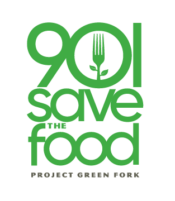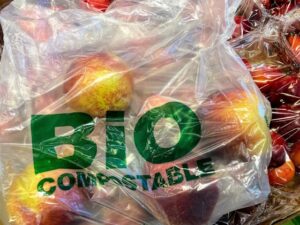The world produces more than enough food to nourish its population, yet approximately one in nine people still face food insecurity.
At the same time, one-fifth of food produced for human consumption is lost or squandered globally, equivalent to one billion meals a day.
The choices we make every day can reduce environmental harm while transforming food waste into opportunities that benefit both people and the planet. To create lasting change, it’s essential to understand the most sustainable options for disposing of leftover food. Below are the methods ranked by the EPA’s Wasted Food Scale, from most to least favorable.
1. Most preferred method: Preventing food waste
The most preferred way to handle food waste is to prevent it in the first place. By cutting it at its source, we save valuable resources used in food production, such as water, land, and energy, while also lowering greenhouse gas emissions. This pathway aligns with the highest and best use of food – feeding people.
For consumers, this might mean better meal planning, proper food storage, and buying only what is needed. For businesses, it could involve optimizing inventory management and forecasting demand more accurately to avoid overproduction. On a larger scale, policies and initiatives can help businesses and consumers lessen food refuse.
2. Donating and upcycling food
When food can’t be prevented from being discarded, the next best option is to donate it to those in need. Every year, millions of people around the world go hungry, while vast quantities of perfectly edible food are thrown out. By donating surplus food, restaurants, grocery stores, and households can help bridge this gap.
In addition to donations, upcycling food, or using surplus ingredients to create new products, is another viable course of action. This repurposing of leftovers supports a circular economy by finding new uses for food that would otherwise be dumped.
3. Feeding animals
When food is no longer fit for human consumption, feeding it to animals is a practical alternative. For centuries, farmers have fed livestock with food scraps, and this practice continues today, helping to shrink the environmental burden of food waste. Many byproducts from food manufacturing, such as fruit peels or bakery leftovers, can be repurposed into animal feed.
This method is eco-friendly, as it prevents food from ending up in landfills and lowering the need for additional feed crops, which in turn saves resources like water and energy. However, it is crucial to ensure that the food is safe for animals and complies with local regulations.
4. Leaving crops unharvested and anaerobic digestion
Sometimes, it is more sustainable to leave crops unharvested, allowing them to decompose naturally and return nutrients to the soil. When produce cannot be harvested due to market conditions or labor shortages, leaving it in the fields can be a better option than sending it to a landfill.
Anaerobic digestion is another effective choice, particularly when combined with beneficial uses for the resulting byproducts. This process breaks down food scraps in an oxygen-free environment, generating biogas that can be used for energy and digestate that can be used as fertilizer. Anaerobic digestion is a versatile solution that both reduces landfill emissions and creates useful byproducts.
5. Composting
By breaking down food scraps into nutrient-rich soil, composting cuts the volume of waste and creates a valuable resource for gardening and agriculture. Composting can be done at both household and industrial scales, and many cities have introduced municipal composting programs to encourage residents to participate. By composting certain food scraps, we can help lessen methane discharge from landfills while enriching soil and decreasing the need for chemical fertilizers.
6. Least preferred pathways: Landfilling, incineration, and draining
At the bottom of the EPA’s food waste hierarchy are the least preferred methods – landfilling, incineration, and sending food down the drain. These offer little to no benefit and contribute significantly to climate change.
Food scraps in landfills generate methane, a potent greenhouse gas. In fact, an estimated 58 percent of methane emissions from municipal landfills come from food waste. Although incineration can generate energy, food debris is an inefficient source due to its high moisture content, generating significantly less energy compared to other types of municipal solid waste. Meanwhile, sending food down the drain also creates methane due to rapid decay in sewers. Unfortunately, these are still common procedures, despite their significant environmental drawbacks.
Mitigating food waste is a critical part of building a more green and equitable food system. By prioritizing the most sustainable practices of food disposal, we can significantly limit our impact and move toward a circular economy. Everyone has a role to play in ensuring that food is used for its intended purpose – to nourish people instead of stocking landfills.




